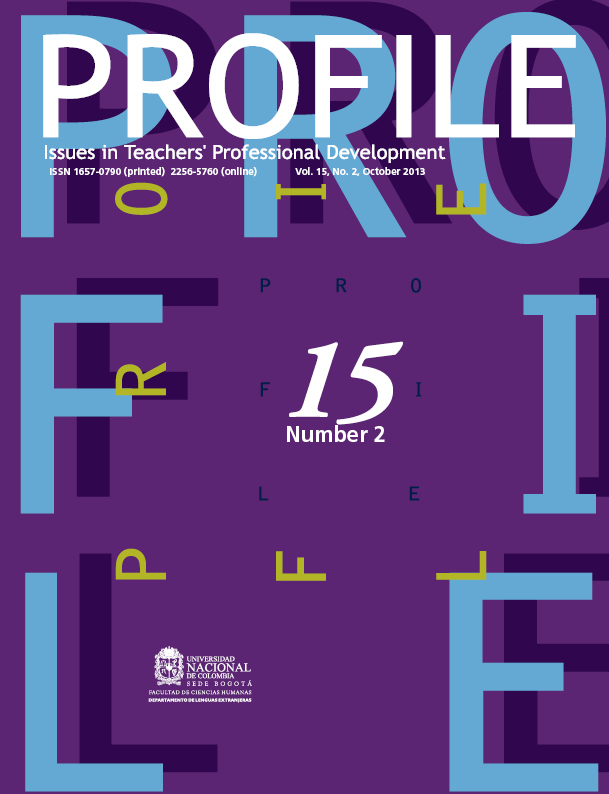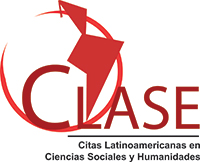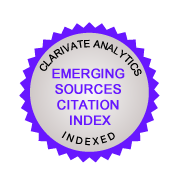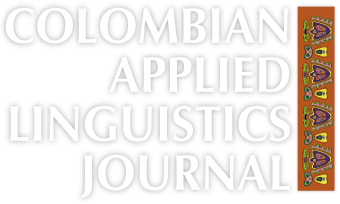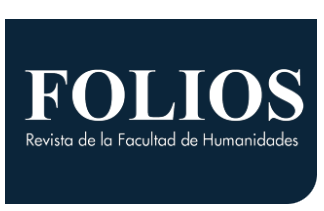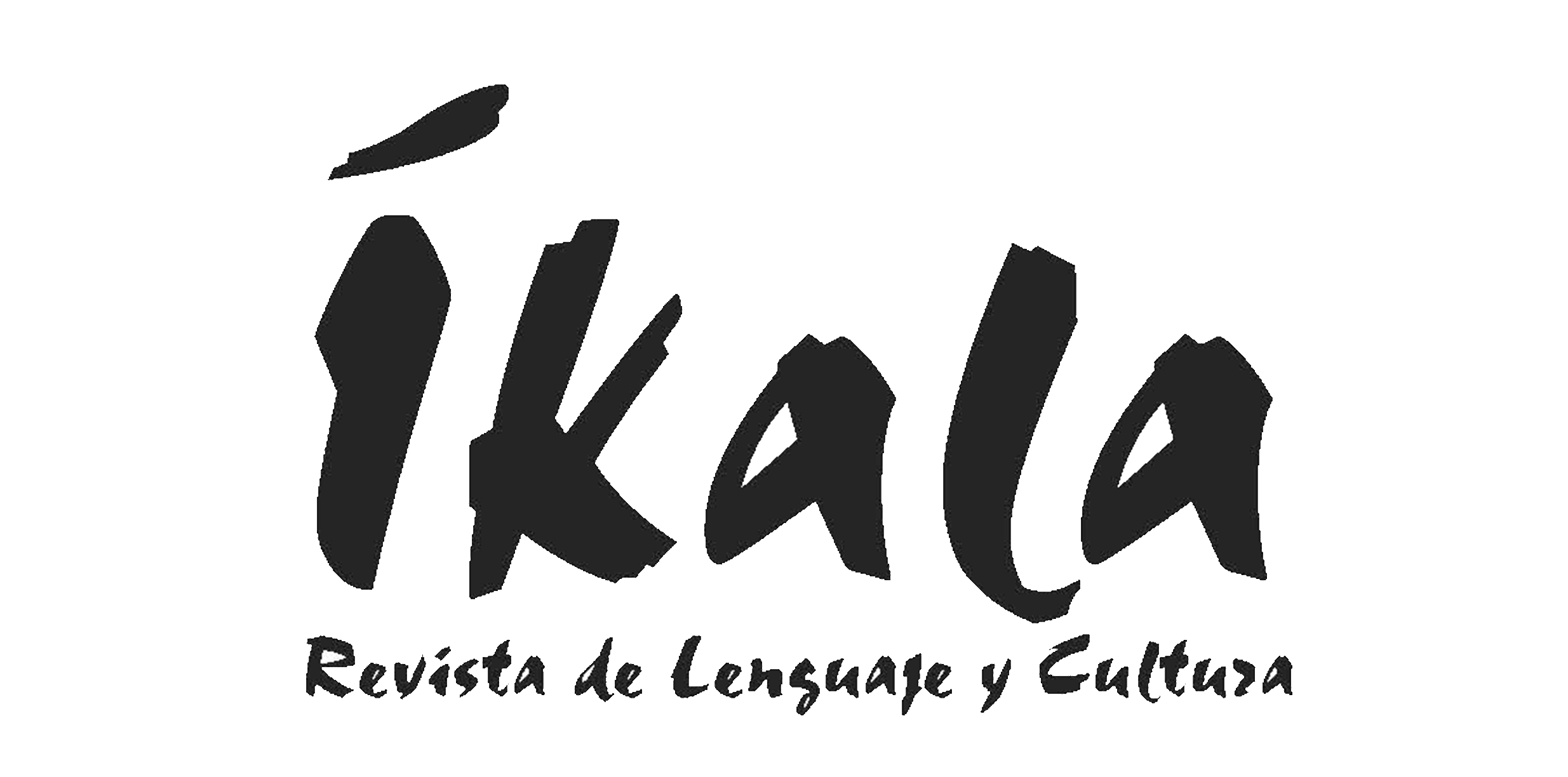Encouraging Students to Enhance Their Listening Performance
Cómo animar a los estudiantes para que mejoren su desempeño en comprensión oral por sí mismos
Keywords:
Autonomy, critical thinking, teacher’s role, teaching listening (en)Autonomía, enseñanza de comprensión oral, función del profesor, pensamiento crítico (es)
This article reports on a pedagogical experience carried out at a Colombian university to help pre-service teachers at an intermediate level of English to improve their aural comprehension. The students were given the task of designing listening activities to be worked on as micro-teaching sessions and were asked to describe their experience by answering a survey. The results showed that students developed the ability to think critically since they needed to make the best decisions regarding the audio level and the design of the activities. They also appeared to have become more autonomous as they realized they could be responsible for their improvement in listening. Additionally, there were evident changes in the teachers’ roles.
En este artículo se describe la experiencia pedagógica desarrollada en una universidad colombiana con el propósito de ayudar a los estudiantes de inglés intermedio de una licenciatura a mejorar su comprensión auditiva. Se pidió a los estudiantes desarrollar actividades de escucha para ser trabajadas en sesiones de microenseñanza y describir su experiencia, contestando una encuesta. Los resultados evidenciaron que los estudiantes desarrollaron su pensamiento crítico en la medida que necesitaban tomar decisiones con respecto al nivel de dificultad del audio y al diseño de las actividades mismas. También se mostraron más autónomos por cuanto se hicieron conscientes de su responsabilidad en el mejoramiento de su comprensión oral. Adicionalmente, se dieron cambios en los papeles del profesor.
Encouraging Students to Enhance Their Listening Performance
Cómo
animar a los estudiantes para que mejoren su desempeño en
comprensión oral por sí mismos
Sonia
Patricia Hernández-Ocampo*
María
Constanza Vargas**
Pontificia
Universidad Javeriana, Colombia
This article was received on January 11, 2013, and
accepted on July 2, 2013.
Spanish-speaking students constantly complain about
the difficulty they have comprehending spoken English. It seems teachers do not
often provide them with strategies to alleviate that. This article reports on a
pedagogical experience carried out at a Colombian university to help
pre-service teachers at an intermediate level of English to improve their aural
comprehension. The students were given the task of designing listening
activities to be worked on as micro-teaching sessions and were asked to
describe their experience by answering a survey. The results showed that
students developed the ability to think critically since they needed to make
the best decisions regarding the audio level and the design of the activities.
They also appeared to have become more autonomous as they realized they could
be responsible for their improvement in listening. Additionally, there were
evident changes in the teachers’ roles.
Key words: Autonomy, critical
thinking, teacher’s role, teaching listening.
Es común que
los hablantes de español se quejen de su comprensión oral en
inglés. Parece que los profesores no siempre dan a sus estudiantes
estrategias para mejorar al respecto. En este artículo se describe la
experiencia pedagógica desarrollada en una universidad colombiana con el
propósito de ayudar a los estudiantes de inglés intermedio de una
licenciatura a mejorar su comprensión auditiva. Se pidió a los
estudiantes desarrollar actividades de escucha para ser trabajadas en sesiones
de microenseñanza y describir su experiencia,
contestando una encuesta. Los resultados evidenciaron que los estudiantes
desarrollaron su pensamiento crítico en la medida que necesitaban tomar
decisiones con respecto al nivel de dificultad del audio y al diseño de
las actividades mismas. También se mostraron más autónomos
por cuanto se hicieron conscientes de su responsabilidad en el mejoramiento de
su comprensión oral. Adicionalmente, se dieron cambios en los papeles
del profesor.
Palabras clave: autonomía,
enseñanza de comprensión oral, función del profesor,
pensamiento crítico.
Introduction
The present article intends to show what has been done
in the field of linguistics, say teaching English to future English teachers,
in order to help the students enhance their listening skill. Now, teaching a
language means not only teaching the fundamentals of it but also abilities and
strategies that help the learners improve their performance on it, so that they
can really communicate.
Concerning a foreign language like English, we must
talk about non-native users of English who use the language to communicate with
others or to teach others how to use it. This is our case. As teachers, we try
to teach our student-teachers how to use English properly. This arduous task
involves, of course, the teaching and acquisition of the four skills: writing,
reading, speaking, and listening.
Now, it is common to hear English students say that
one of the biggest difficulties they have is to comprehend spoken English and
to obtain good grades on listening exams. For them, it is easier to get to
write in English and comprehend written texts than to have a good performance
in listening and speaking. In addition, it is common for teachers to tell their
students they will improve their speaking ability if their listening skill is
enhanced. However, it is not common that teachers tell the students how they
can go about doing it, and it is very likely that the students do not know how
to practice listening on their own, as we have evidenced with our students.
That is precisely our purpose with this document: to
show the reader one of the things that can be done in order to help students
with their learning and listening comprehension. To do that, we will start by
describing the three pillars we consider are the ones involved in the project:
teaching listening, autonomy, and critical thinking. Afterwards, a description
of the project will be provided, as well as the results obtained.
Three Axes
to Consider
First, it is important to know about the
characteristics of our learners: they are future teachers since they are
majoring in Modern Languages at Javeriana University.
The course is intermediate English, which means most of them are in fifth
semester and have been taking 10-hour-a-week English classes for two years.
According to the Common European Framework of Reference for Languages, they
would be classified in level B2; this implies that they “can understand
extended speech and lectures and follow even complex lines of argument provided
the topic is reasonably familiar. [They] can understand most TV news and
current affairs programmes. [They]
can understand the majority of films in standard dialect” (Pearson
Longman, n.d., p. 5). However, our
students’ enduring complaint is that it is complicated to understand any
audio text when the dialect is different from the American one. Our
discernment, as teachers, is that it is not only the dialect but also the pace
and the task proposed that prevents them from obtaining good results.
Considering that the project has been developed in
order to help those students enhance their listening performance, and also
considering the fact that reminding the students they have to do extra practice
on their own—since what is done in class is never enough—does not
mitigate the problem, we feel there are three axes to consider: Teaching
Listening, Autonomy, and Critical Thinking.
Teaching Listening
This is not an easy task because listening involves
going through a lot of mental processes, from distinguishing sounds to knowing
a grammatical rule. In addition, we as teachers fall into the habit of having
our students practice listening, but we do not tend to teach them how to listen. Obviously, practice plays
an essential role in developing the listening skill; however, the way such
practice is done is a key factor in developing the skill more effectively.
In the classroom, for instance, we should take into
account the understandable input we must use and the affective factor for
listening comprehension (Krashen, 1981). In addition, we have to emphasize two
different processes to be used when listening to an oral text and trying to
understand it: bottom-up processes and top-down processes (Richards, 1990). The
first ones involve the linguistic knowledge one possesses to decode the
message, so it involves knowing, for example, how words link together, how some
sounds disappear, and how grammar helps to guess meaning. The second ones,
top-down processes, deal with the previous knowledge the listener has about the
topic and how he associates this prior knowledge to the information he listens
to in order to enhance comprehension.
This all brings up the complexity of the listening
skill; nevertheless, the way listening comprehension is taught might make the
needed skills even more difficult to acquire. We should get our students aware
of these processes at the time they are doing a listening exercise. For
example, we can teach them that their knowledge about the language
(prepositions, collocations, tenses, subject-verb agreement, etc.) will help
them make predictions of the words that will follow in a sentence depending on
the context, of course (bottom-up processes). Also, we can have them realize
the importance of reading the instructions and the questions before doing the
task in order to activate their knowledge of the vocabulary related to the
topic and, in this way, improve their listening comprehension (top-down
processes).
Not only is it necessary to include conscientious
listening strategies in our classes to improve our students’ listening
comprehension, it is also important to provide our students with an appropriate
environment that helps them in the acquisition. Here, Krashen’s (1981)
affective filter hypothesis plays an important role, as does his input
hypothesis. The first one refers to lowering students’ stress and anxiety
as they are doing a listening exercise because motivation and self-confidence
encourage language acquisition. The second one refers to providing students
with comprehensible input that is a little higher than what they can produce
and with enough input of this kind they will acquire the language. Language
acquisition then involves practicing the language in real contexts or in
situations similar to the real use of the language without feeling stressed or
anxious. As teachers, we can help develop such acquisition by choosing the
appropriate audios for our students and by motivating them to do listening
activities in a comfortable environment.
Autonomy
This is the second idea behind the project. Autonomous
learners are more effective learners and therefore more motivated learners.
According to Benson (2001, p. 47), “autonomy is generally defined as the capacity
to take charge of, or responsibility for, one’s own learning.” What
this means is that autonomous learners are able to control three aspects of the
learning process: their cognitive processes, the content they are learning, and
the way they are learning. In exercising this control, learners use different
strategies: metacognitive, cognitive, and socio-affective strategies. The first
ones enable the student to reflect on the learning process by planning,
managing, monitoring, and evaluating learning tasks; cognitive strategies are
the particular exercises or actions students take with the material to be
learned; socio-affective strategies involve working or interacting with others
to improve learning.
According to Vandergrift (2002), skilled listeners use
more metacognitive strategies than their counterparts: “When listeners
know how to . . . analyze the requirements of a listening task; . . . activate
the appropriate listening processes required; . . . make appropriate
predictions; . . . monitor their comprehension; . . . and evaluate the success
of their approach, they are using metacognitive knowledge for successful
listening comprehension” (“Listening in Language Learning and
Teaching,” par. 1). Developing metacognitive knowledge in our students is,
therefore, critical for the effectiveness in their listening skill. Vandergrift
proposes a pedagogical sequence to practice listening and help students develop
metacognitive knowledge: The first step is having pre-listening activities
which prepare the students for the content they are to listen to and the task
they have to do; in pre-listening activities students are aware of their
knowledge about the topic, can make predictions about the oral text and can
focus on the particular information they need in order to do the listening
task. The second step is monitoring listening comprehension; in this step,
students make decisions on what strategy they need to use during the listening
task, check their predictions and check their comprehension of the oral text.
The third step involves assessing the effectiveness of the strategy used during
the listening task. It is imperative then to encourage our students to follow
these steps to become more autonomous listeners. Hopefully, with the practice
of these steps when doing listening exercises, they will eventually be more
likely to practice on their own in order to improve their listening skill.
Critical Thinking
Paul (1992) states that it is only when we have one
problem to solve that we think critically. In order to solve a problem, we first need to analyze its nature then
come up with different ideas to solve it, evaluate these ideas, and make
decisions to choose the best alternatives. These processes require high order
thinking skills that improve our own thinking. But improving our thinking not
only implies analysis and decision making but also assessing our thinking
(analysis, decisions) using intellectual standards as Paul suggests.
Intellectual standards are used to get students to check or assess the quality of
their judgements. They include clarity, accuracy,
precision, relevance, depth, breadth, and logic. Teachers can teach these
standards by posing questions to students about their reasoning.1 Therefore, getting our students to solve problems is
not enough to turn them into critical thinkers; they need to assess their
analyses and decisions in solving problems by using the abovementioned
intellectual standards. All in all, critical thinking is, in Paul’s
words, “thinking about your thinking while you are thinking in order to
make your thinking better” (par. 3).
The Project
Conscious of the need to guide our students in their
language acquisition and autonomous work, we have included a listening project
in our classes as a way to help them improve their listening skill. The project
was carried out in a teaching degree program with intermediate students of
English; the project—which is currently being developed not only in the
intermediate level classes, but in others—was run for two semesters in
2010-2011. The information was collected in two classes, with an average of 20
students each.
In the project, students were to look for an authentic
audio text and create an activity with which they and their partners could have
good practice. In this way, our students were making use of the language in
real contexts, which might help them enhance their understanding when they
listen to English in authentic situations (Field, 1998) and they could practice
listening in an atmosphere where they were relaxed, not stressed as is the case
of class exercises and exams. As Krashen (1981) suggests, reducing stress
enhances language acquisition.
The first condition for the students to do the
activity was that the audio had to be authentic, so that they could become
familiar with the characteristics of natural speech (Field, 1998). That means
that they were not allowed to choose any audio that came from textbooks.
Instead, they had a wide variety of sources such as magazines, websites,
podcasts, songs, movies, and so forth. The constraint related to textbooks is
due to the fact that they have adapted audios; therefore, they are not real
life examples of what an English learner might be exposed to. Students must
also consider the level of the audio, neither too high nor too low, but
according to their language level (Krashen, 1981). On this first condition, the
students faced a problem: to decide which audio would match best with their
level.
The second condition was that they had to identify the
type of task they had more difficulty with. Thus, the students were obliged to
reflect on their strengths and weaknesses to distinguish the latter and try to
compensate for them, which would somehow enable them to be critical about their
learning process (Paul, 1992). Besides, as the groups were varied—what
might be a strength in one student might be a weakness in another—this
resulted in diverse types of challenging tasks.
The third condition consisted in designing a
pre-listening, a while-listening, and a post-listening activity. Here they
faced the responsibility of designing a creative pre-listening activity to get
their partners’ attention, which was as important as a well-designed
post-listening activity that kept the audience involved.
Student-presenters, in a micro-teaching situation,
gave their partners the activities they themselves. The whole situation lasted
for about half an hour. Once the presentation was over and all the class had
done the proposed activities, it was time for evaluation: self and peer
evaluation (see Appendixes A and B).
The class was to evaluate the presenters as “teachers” and so were
the student-presenters, who did self-evaluation; assessment focused on the
design of the activities. As a consequence, the students were learning how to
assess themselves and their partners; they became more responsible as they
recognized weaknesses, not only in their partners but also in themselves and
became aware of what they could do on their own to their benefit.
Towards the end of the semesters, after having three
micro-teaching sessions with different audios and activities per pair, a
general evaluation of the project took place. It was a blind open question
survey2 (see Appendix C) in
which they were asked about their feelings towards the assignment, the
difficulties they had had, and the gains they made, as well as suggestions and
complaints.
The above resulted in students being reflective upon
and critical of their performance; they were to identify strengths and
weaknesses and go beyond that by getting into action. It is valuable that they
could say what their difficulties were and then tried to alleviate them by
doing the exercise of designing listening activities as proposed.
Results
The results are based on the information collected
through the survey to assess the project as a whole. All students in the two
classes answered the survey. The analysis of the information was a qualitative
one; the data were analysed so that some categories
emerged according to repetition of information relating the criteria in the
survey: feelings as a “teacher,” feelings towards peer and
self-evaluation, gains, suggestions. The findings were classified into four
categories: Performance, Critical Thinking and Autonomy, Playing the
Teacher’s Role, and Assessment.
Performance
All the students reported having an important gain:
The listening project has helped them comprehend spoken English better, apart
from giving them the chance to practice speaking. They commented that there had
been a certain amount of improvement in the different skills, especially in
listening, as well as in the acquisition of new vocabulary and improvement in
pronunciation; besides, it gave them the opportunity to learn about new topics different
from the ones they see in their textbooks. Students also claimed they had
gotten some new practice when listening: “Now I try to get the whole idea
the first time I listen to the audio and, after that, I try to answer the tasks
that are asked;” “[I have learnt] to do charts, to classify the
information, to infer;” “Now I try to understand little details,
not only the general idea.”
With regard to the common complaints about the
difficulty in understanding when it was a dialect different from the American,
they stated that they could understand different accents better: “It
helps us to improve our comprehension of different types of voices;”
“I have better understanding even with fast audios,” referring to
the pace of the speech, they said. Furthermore, many said they had made some
progress in the exams, although this was not the purpose of the project. With
respect to this, it is important to add that not all the students made the same
progress, as it would depend on every student’s level of proficiency;
some of them did not even pass their exam(s)—“I don’t have a
good listening [performance], but the project is a good practice for our
listening exams”—but experienced such an important advance in
listening comprehension that they felt more confident as they recognised their weaknesses and got ideas on what to do to
alleviate them.
It is obvious that the students were exposed to a lot
of input that maybe helped them acquire the language (Krashen, 1981); in other
words, this input promoted the use of the language in a subconscious way and
made them feel more comfortable when listening to an audio for a quiz or an
exam.
On the other hand, when asked about their feelings
when performing as presenters, students said they had felt nervous,
intimidated, stressed, scared, and sometimes confused and disappointed:
“I felt stressed because the audience didn’t want to
participate;” “nervous because I didn’t know how to explain
the instructions;” and “I felt scared because I don’t like to
stay in front of many people.” Others said they had felt disappointed
because the results were not what they expected. Nevertheless, not all of them
had bad feelings as presenters; many of them reported feeling comfortable and
added that it was a very good experience as “you learn how to manage the
audience.”
Students were also asked about their feelings as
members of the audience. Regarding this, most of them reported to have felt
interested as there were different topics on culture, history, science, and
medicine, among others; they also said they felt relaxed and expectant:
“I felt more confident and relaxed when listening, which allows me to
think more clearly.” Also, some added that they had felt more secure
because they did not have to speak before the audience. However, others said
they felt a little bored because there were too many exercises of the same
kind.
Critical Thinking
and Autonomy
As we know an autonomous learner is one who thinks
critically and a critical thinker makes an autonomous learner, we decided not
to separate the findings on these. The students admitted that it had been hard
to find an appropriate audio according to their level. They were aware of the
fact that they had to design something for the others to approve and find
useful: “Something that was kind of difficult was to create something new
and appealing for the others.” Besides, the students became more
acquainted with their active role in their learning process: “I have
learned that I must do my job conscientiously.” “It is useful
because you can see what you need to improve.”
Furthermore, as said before, some students realized
that they can do a lot to alleviate their limitations—at least, they were
aware of the many sources they could access to get extra practice on their own:
“I learnt that I can do exercises by myself and that I can use the
internet to do them;” “I found that I can use the podcasts and news
with listenings
(referring to audios) to improve my listening and vocabulary.” This shows
that students are becoming more responsible for their own improvement. All of
them confessed to having done more work at home as they have learned that they
can find a lot of web pages to practice with on their own. Also, they realised, while looking for the audios to do the exercises,
that there are a lot more activities for practising
themselves. They claimed to have learned about the wide variety of resources
the Centro de Recursos
(Resources Center) offered, apart from the web pages they found such as: www.unicef.org, www.bbc.co.uk/radio/podcasts, www.sciam.com/podcast
Playing the
Teacher’s Role
Our students, as stated before, will become language
teachers once they finish their major (at least, that is the preparation they
are receiving). The project allowed the students to take the role of a teacher:
“I felt as a teacher,” “it helped us to analyse
ourselves as teachers,” they commented. Others, thinking further about
what being a teacher means, assured us that the project helped them think of
how to prepare a class taking the students’ characteristics into account:
“You have to design challenging exercises, not only fill-in-the-blank
activities because they are repetitive and don’t allow the students to
think.” Similarly, some recognised they could
be more creative which, they acknowledged, is good for them as future teachers.
They also realized that being in front of the audience
implies some form of control over it. They felt that was challenging as they
said it was difficult “to catch the attention of the class because to
control the group is very hard” and, sometimes, “it was difficult
to give clear instructions.” Clarity of instructions, we must say,
improved as they did the project a second and third time. So, we could notice
students took the feedback into account every time they did their
presentations.
Others recognized they had learned how to control
their fear of speaking in public, as it also improved through the different
presentations they did. Besides, some said to have been trained in evaluation,
as they had to assess their partners. Although in the beginning it was taken as
“if the presenters are my friends, I will give them a good
grade”—to put it in the students’ words—they turned out
to be more objective towards the end of the semester: They justified the score
they gave their partners. All the students considered these aspects to be very
helpful as they will be in front of a group soon, and will have to evaluate
them as teachers.
Assessment
Although most of the students reported finding peer
evaluation useful, a few did not agree: “Peer evaluation is not useful
because the majority of them [the students] don’t take the suggestions
into account; they just want a good grade, but it is not like that;” Some
felt that the comments made by their peers were not fair as they considered
their peers to be evaluating the topic instead of the activity itself. Others,
instead, recognised the importance of it since they
found it useful to have another point of view different from the
teacher’s. With regard to the role of evaluating their peers, they said
it was interesting as “it helps you know what it is like to be a teacher.”
They were able to suggest to their partners what to improve and most of them
were serious when doing it. All of them reported having evaluated their
partners conscientiously.
Moreover, they valued the importance of feedback in
learning: “The learning process implies good feedback and we had
it,” they affirmed.
Conclusions
It is important to highlight the fact that many of the
students were aware of their problems with pronunciation and grammar, besides their
low performance on listening, which reinforces the idea of the project being
helpful to lead students to an improvement of other skills/components of the
language.
The project required the students to make decisions
about the topic and material they would use in their presentations, as well as
about the activities they would plan. This involved reflecting on their
performance to identify strengths and weaknesses and, based on that, analyzing
and judging sources and methodology, which reflect the use of the critical
thinking skills Paul (1992) talks about.
In the same way, although some students did not design
the exercises themselves, they were useful because they had to make decisions
on what to use and how to adapt them, taking into account not only their needs,
but also their peers’. Some others took already designed exercises as a
reference to design their own; that move implied decision making as well, as
they had to decide if the level was proper and if the type of exercise was
interesting enough to be presented.
As long as the projects were presented, students
became more demanding with respect to the difficulty of the audio, the design
of the exercises and the type of activities, which shows they were really
concerned about their need to enhance their performance. They were being
critical of and took responsibility for not only their own performance but also
their peers’, following what Paul, Willsen, and
Binker (1993) and Benson (2001) state.
Thus, some students have gone beyond recognising their weaknesses by using their own strategies
to lessen them. They considered the project to be very helpful since it made
them aware of the many possibilities of working on their own; they are becoming
more autonomous. They really felt there was some improvement in their
performance on listening (which was what we aimed at with the project),
although it did not guarantee obtaining good grades—at least the ones
they expected—on their tests.
As for language acquisition, students had to choose an
audio that was at a higher level than the level they use to produce the
language which involved the kind of input that Krashen (1981) says is necessary
to acquire a language. In the same way, students had the chance to practice
listening in a relaxed environment since the ones who were not the presenters
had to do the exercise without the pressure of a grade for their performance.
This involves the second point made by Krashen about motivation and
self-confidence, which promote language acquisition.
By evaluating themselves and their peers, students
will become more analytical and critical. Thus, when they become teachers, they
will have been faced with evaluating and, somehow, will have some confidence in
the process and will take it more into consideration as they will have
reflected on all that it implies.
Students played the role of a teacher and realized
that it implied being creative, taking the students’ characteristics into
account to design the activity, controlling the group, keeping the
group’s attention, and challenging the students to get good responses.
They felt it was difficult but liked the experience a lot.
There was a change of roles. Our students were given
the responsibility for some functions that traditionally have been in
teachers’ hands. This has led us to confront our own practice; we have
begun reflecting upon our role as guiding agents, not as providers.
1 For an example of a set of questions about depth,
let’s quote Paul and Elder (2007, p. 11): “Depth: How does your
answer address the complexities in the question? How are you taking into account
the problems in the question? Is that dealing with the most significant
factors? A statement can be clear, accurate, precise, and relevant, but
superficial (that is, lack depth).”
2 The students were not asked to identify themselves
when answering the surveys.
References
Benson, P. (2001). Teaching and researching
autonomy in language learning. Essex, UK: Longman.
Field, J. (1998). Skills and strategies: Towards a new methodology for
listening. ELT Journal, 52(2),
110-118.
Krashen, S. D. (1981). Second language acquisition and second language learning [HTML
version]. Retrieved from: http://www.sdkrashen.com/SL_Acquisition_and_Learning/cover.html
Paul, R. (1992, April). Critical thinking: Basic questions and answers
[Interview for Think Magazine].
Retrieved from http://www.criticalthinking.org/aboutCT/CTquestionsAnswers.cfm
Paul, R., & Elder, L. (2007). The miniature
guide to critical thinking: Concepts and tools [PDF version]. Retrieved
from http://www.d.umn.edu/~jetterso/documents/CriticalThinking.pdf
Paul, R., Willsen, J., &
Binker, J. A. (Eds.). (1993). Critical thinking: How to
prepare students for a rapidly changing world. Santa Rosa, CA: Foundation
for Critical Thinking.
Pearson Longman. (n.d.).
Teacher’s guide
to the Common European Framework [PDF version]. Retrieved from http://www.pearsonlongman.com/ae/cef/cefguide.pdf
Richards, J. (1990). The language teaching matrix. Cambridge, UK: Cambridge
University Press.
Vandergrift, L. (2002). Listening: Theory and practice in modern foreign
language competence. Retrieved from: https://www.llas.ac.uk/resources/gpg/67
About the
Authors
Sonia Patricia
Hernández-Ocampo is an English teacher at Pontificia
Universidad Javeriana (Colombia). She earned a
master’s degree in Education at the same university. She has designed
material for the Language Department’s distance English program. Her
interests also include evaluation in education.
María Constanza Vargas has studied and worked in Colombia. She holds a BEd in Modern Languages from Universidad de los Andes and
the certificate of “Especialista en Docencia Universitaria”
from Universidad del Rosario. She has worked as a
coordinator in the English Department at Politécnico
Grancolombiano and as materials designer for the
Virtual English courses at Universidad Nacional de
Colombia. Currently, she works as an English teacher at Pontificia
Universidad Javeriana.
Appendix A: Self-Evaluation Forms
Pontificia Universidad Javeriana
Facultad
de Comunicación y Lenguaje
Departamento
de Lenguas
Licenciatura en Lenguas Modernas—Inglés
intermedio
July 2010
Answer the following questions. Be as explicit as
possible.
1. How
did you feel as a presenter?
2. What
was the audience response like?
3. Were
there any problems with the activities proposed?
4. Do you
consider there is anything to improve for future presentations? What? How?
5. Give
yourself a grade from 1-5. Support your answer.
Pontificia
Universidad Javeriana
Facultad
de Comunicación y Lenguaje
Departamento
de Lenguas
Licenciatura en Lenguas Modernas—Inglés
intermedio
July 2010
Presenter
Choose the option—one or more when
suitable—you consider the best.
1. I
was _________ prepared for the activity.
( ) inadequately
( ) fairly
( ) well
2. It
was useful to design the listening activity because…
( ) I learned that I could practise
listening on my own.
( ) I practised how to
design a listening exercise.
( ) I practised grammar.
( ) I practised listening.
( ) I learned new words.
( ) I learned about a topic.
3. The activity…
( ) had problems with respect to the instructions.
( ) had problems with respect to the exercises.
( ) had problems with respect to the level of
difficulty of the audio.
( ) had problems with respect to the layout.
( ) didn’t have any problems.
4. The
reaction/response of the audience was…
( ) negative
( ) fairly positive
( ) positive
5. What
grade 1-5 would you give yourself? _______________
Appendix B: Peer Evaluation Forms
Pontificia
Universidad Javeriana
Facultad
de Comunicación y Lenguaje
Departamento
de Lenguas
Licenciatura en Lenguas Modernas—Inglés
intermedio
February 2011
Answer the following questions. Be as explicit as
possible.
1. Were
the presenters clear when introducing the topic?
2. What
was their level of language?
3. Was
the presentation appropriate for the listening activity?
4. Was
the listening activity in accordance with the level?
5. How
did you feel about the listening and the activities?
6. Did you
have much trouble doing the exercises proposed? Why?
7. What
recommendations would you give the presenters?
8. What
grade 1-5 would you give them? Support your answer.
Pontificia
Universidad Javeriana
Facultad
de Comunicación y Lenguaje
Departamento
de Lenguas
Licenciatura en Lenguas Modernas—Inglés
intermedio
July 2010
Student
Choose the option—one or more when suitable—you consider the
best.
1. The
activity has the following characteristics:
a. ( ) Authentic text
b. ( ) Pre-listening component
c. ( ) While-listening component
d. ( ) Post-listening component
2. The
level of difficulty of the audio was…
a. ( ) low
b. ( ) adequate
c. ( ) high
d. ( ) too high
3. The
instructions of the activity were…
a. ( ) confusing
b. ( ) fairly clear
c. ( ) clear
4. The
information of the audio was…
a. ( ) poorly used
b. ( ) fairly well used
c. ( ) well used
5. The
exercises were…
a. ( ) creative
b. ( ) interesting
c. ( ) challenging
d. ( ) varied
e. ( ) organized
f. ( ) well designed
g. ( ) simple
h. ( ) boring
i. ( ) easy
j. ( ) badly designed
k. ( ) other: ___________________________
6. (Name)
_____________________ needs to improve….
a. ( ) fluency
b. ( ) pronunciation
c. ( ) grammar
d. ( ) intonation
7. (Name)
_____________________ needs to improve…
a. ( ) fluency
b. ( ) pronunciation
c. ( ) grammar
d. ( ) intonation
8. What
recommendations would you give the presenters?
9. What
grade 1-5 would you give them? _________________
Appendix C: General Evaluation of the Project
Pontificia Universidad Javeriana
Listening Project Assessment
1. How did you
feel as the presenter? As a member of the audience?
2. Was
it difficult to present your exercise? Why?
3. Do
you consider the listening project useful? Why?
4. What
did you learn?
5. Did you
find any sources that you can use on your own initiative just for practice?
Which ones?
6. Did it help
you use new strategies or change the ones you had to improve your listening
skill? Which ones?
7. Do you
perceive any progress in your listening performance through the listening
projects?
8. How
can the listening project be improved?
9. Did you
design the exercises yourself or did you take them from another source?
10. Did you
feel well evaluated by your classmates?
11. Did you
evaluate your classmates conscientiously?
12. Do you
find evaluating and being evaluated useful? Why?
13. What did you think of
the audience’s response? Were they interested? Was it what you expected?
References
Benson, P. (2001). Teaching and researching autonomy in language learning. Essex, UK: Longman.
Field, J. (1998). Skills and strategies: Towards a new methodology for listening. ELT Journal, 52(2), 110-118.
Krashen, S. D. (1981). Second language acquisition and second language learning [HTML version]. Retrieved from: http://www.sdkrashen.com/SL_Acquisition_and_Learning/cover.html
Paul, R. (1992, April). Critical thinking: Basic questions and answers [Interview for Think Magazine]. Retrieved from http://www.criticalthinking.org/aboutCT/CTquestionsAnswers.cfm
Paul, R., & Elder, L. (2007). The miniature guide to critical thinking: Concepts and tools [PDF version]. Retrieved from http://www.d.umn.edu/~jetterso/documents/CriticalThinking.pdf
Paul, R., Willsen, J., & Binker, J. A. (Eds.). (1993). Critical thinking: How to prepare students for a rapidly changing world. Santa Rosa, CA: Foundation for Critical Thinking.
Pearson Longman. (n.d.). Teacher’s guide to the Common European Framework [PDF version]. Retrieved from http://www.pearsonlongman.com/ae/cef/cefguide.pdf
Richards, J. (1990). The language teaching matrix. Cambridge, UK: Cambridge University Press.
Vandergrift, L. (2002). Listening: Theory and practice in modern foreign language competence. Retrieved from: https://www.llas.ac.uk/resources/gpg/67
How to Cite
APA
ACM
ACS
ABNT
Chicago
Harvard
IEEE
MLA
Turabian
Vancouver
Download Citation
Article abstract page views
Downloads
License
Copyright (c) 2013 Sonia Patricia Hernandez-Ocampo, María Constanza Vargas

This work is licensed under a Creative Commons Attribution-NonCommercial-NoDerivatives 4.0 International License.
You are authorized to copy and redistribute the material in any medium or format as long as you give appropriate credit to the authors of the articles and to Profile: Issues in Teachers' Professional Development as original source of publication. The use of the material for commercial purposes is not allowed. If you remix, transform, or build upon the material, you may not distribute the modified material.
Authors retain the intellectual property of their manuscripts with the following restriction: first publication is granted to Profile: Issues in Teachers' Professional Development.



